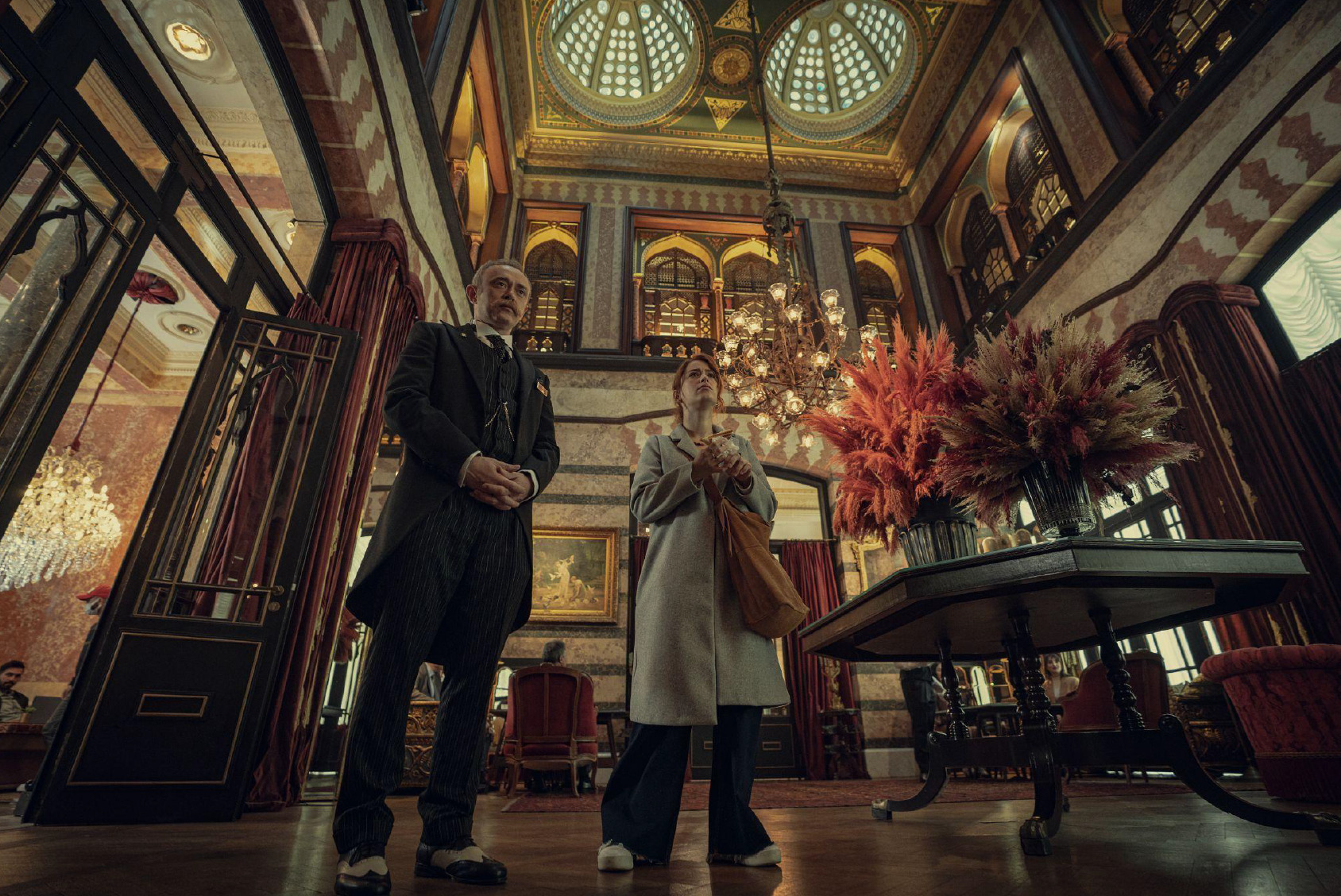
- Television
It’s “Midnight at The Pera Palace” for Netflix
Inspired by Charles King’s novel “Midnight at the Pera Palace” which centers around the iconic Pera Palace Hotel in Istanbul ( built in 1892 for the purpose of hosting passengers of the Orient Express), Netflix launches a television adaptation that covers the fascinating history of the city, the Ottoman Empire and Turkey.
The eight-episode series depicts young journalist Esra’s encounter with the legendary hotel. When she is assigned to write a piece about the hotel, she accidentally discovers that room 411 is a portal to the year 1919. Thrust into the past, she lands in the middle of a political conspiracy. Together with Ahmet, the quirky hotel manager, Esra must protect the course of history and the future. However, Istanbul in 1919 is a dangerous place, and when Esra meets Halit, the handsome and mysterious owner of Istanbul’s wildest club, she realizes that in the Istanbul of 1919 nothing is as it seems and no one is who they say they are.
The creator and director of the series, Emre Sahin, has produced an array of scripted and unscripted projects for major networks, including Bin Laden’s Hard Drive for National Geographic (also streaming on Hulu); Believers, Buried Worlds with Don Wildman, and Mission Declassified for the Travel Channel; and Unexplained and Unexplored for Discovery and Science Channel.
We spoke to Şahin about his latest show.
As an international filmmaker, what do you think of the growing global success of international productions?
As a multicultural filmmaker, it’s extremely exciting for me to see the changes in the TV and streaming landscape. This is something I hoped would come for many years and now we are finally starting to see dramatic changes. Some of the most interesting and successful productions are now global and international productions. This is just the beginning, so the world should be ready for much more to come. This is the age of international shows!
Why did you want to bring your Midnight at the Pera Palace to the screen? What was the motivation for making it or what was the inspiration, besides Charles King’s novel?
As an İstanbul native, I am an avid history enthusiast. The book that inspired the series did a fantastic job at telling a very important slice of Turkish history – the transition from the Ottoman Empire to the modern Turkish republic. Once I read the book, I was excited by the idea of looking at that historical period through the eyes of the oldest hotel in İstanbul. Once we started developing the series story, I wanted to tell a story that was both international and Turkish at the same time. I wanted to share the feeling of İstanbul through the ages with an international audience and do that in a fun, multilayered story.
As a producer, what kind of connection do you feel to Turkish stories?
There are so many amazing stories from Turkey waiting to be shared with the world. It’s such a colorful and amazing country with an amazing history. I find that no matter how far away I go, I am constantly drawn back to Turkey to tell these stories.
Pera Palace is obviously a very historic place, not only for Turkey but for the world. How important was it for you to bring these historic stories to the younger generation?
History doesn’t have to be taught in a classroom or an academic setting. It shouldn’t be something at arm’s length. It needs to be immediate — a story, a picture, etc. One of the best ways to get younger generations interested in history is to spark their imaginations through this visual medium. It’s enough to bring them into those worlds, in the case of Midnight at Pera Palace, Istanbul in 1919. A lot of times people fall into the trap of thinking history is old or boring or may be irrelevant, but that could not be further from the truth. For example, Istanbul in 1919 had a much wilder nightlife than even today.
How was it filming in Turkey during the Covid-19 times?
We shot at the peak of the pandemic and it certainly was not easy. There was a massive effort by a dedicated team to ensure our safety. We did close to 20,000 Covid tests during the production. Despite that, we still had a few cases that forced us to shut down, but in the end, we made it through.

